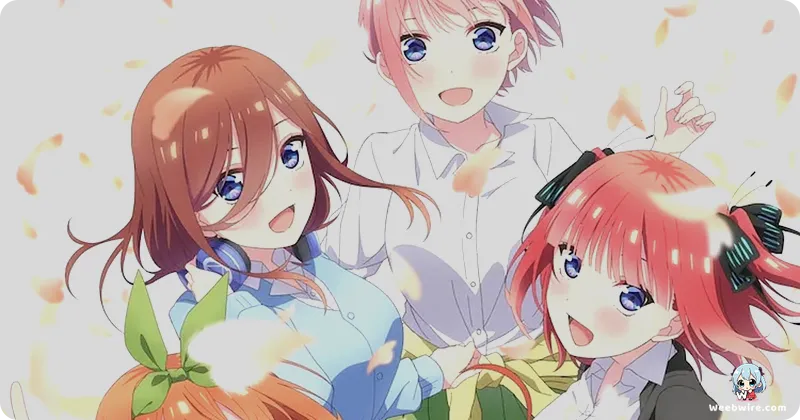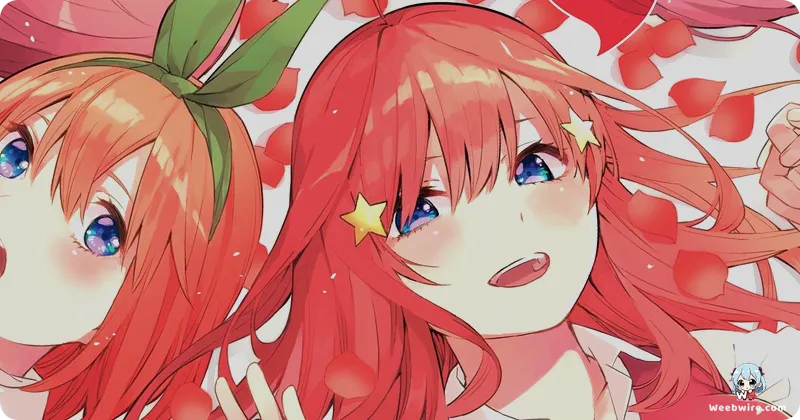Beyond the Bell: The Quintessential Quintuplets' Deepest Secrets Revealed

Since its emergence as a global phenomenon, The Quintessential Quintuplets has captivated audiences with its compelling premise: a diligent yet struggling high school student, Fuutarou Uesugi, undertakes the challenging task of tutoring five strikingly similar, yet profoundly individual, quintuplet sisters. The series masterfully weaves together heartwarming romantic comedy and charming slice-of-life elements, all while maintaining a central mystery: which of the Nakano sisters will ultimately become Fuutarou's bride? Beyond its celebrated narrative, a wealth of fascinating, behind-the-scenes insights reveals the meticulous craftsmanship behind this beloved anime, showcasing details even the most ardent fans might have overlooked.
The Evolving Vision of a Creator
One significant revelation concerns manga creator Negi Haruba's original artistic vision. Haruba initially envisioned a much shorter series, aiming for a swift romantic conclusion. However, the manga's explosive popularity, significantly fueled by intense fan engagement and the burgeoning 'waifu wars' among its readership, prompted a pivotal decision: to extend the narrative. This expansion proved crucial, allowing for deeper character development for all five Nakano sisters—Ichika, Nino, Miku, Yotsuba, and Itsuki—and enriching their complex relationships. Haruba later confirmed that the series' definitive ending, with Fuutarou choosing a singular bride, was a conscious decision made remarkably early in the serialization process, a choice that undeniably intensified fan debates and added significant emotional weight to the journey.
Ingenious Character Design and Numerical Nuances
The ingenious character design expertly differentiates the quintuplets despite their identical appearances. Each sister's unique personality shines through subtle yet defining features: Ichika's distinctive short hair, Nino's elegant ribbons, Miku's signature bangs, Yotsuba's cheerful ribbon, and Itsuki's iconic star-shaped hairpins. Beyond these hairstyles, their distinct fashion choices and individual body language further establish their individuality, allowing audiences to discern them even during playful impersonations. Tezuka Productions' anime adaptation masterfully brought these nuances to life, fostering strong emotional bonds with each 'best girl.'

Adding a clever numerical layer, each sister's name subtly incorporates a number: 'Ichi' (one) for Ichika, 'Ni' (two) for Nino, 'Miku' (phonetically linked to 'san' or three), 'Yotsu' (four) for Yotsuba, and 'Itsu' (five) for Itsuki. This elegant motif not only aids recall but also symbolizes their collective identity as five distinct individuals bound by an unbreakable familial connection.
The Power of Voice Acting
The Japanese voice cast delivered exceptional performances, overcoming the inherent challenge of portraying five identical yet unique characters. Ayana Taketatsu, who voiced Nino, and Miku Itō, the voice of Miku, received particular acclaim for imbuing their roles with strong personalities and profound emotional depth, sparking friendly rivalries and passionate discussions among fans. This vocal artistry was undeniably crucial in solidifying audience connections and amplifying the suspense surrounding the central question of 'who will win?'
Igniting the 'Waifu Wars'
Ultimately, The Quintessential Quintuplets transcended its genre to ignite widespread 'waifu wars' across online communities worldwide. This intense engagement fueled massive popularity polls, inspired prolific fan art, drove surging merchandise sales, and even led to real-world events celebrating the series. The lingering mystery of the 'Bell Kisser' kept viewers captivated, meticulously analyzing every clue and theory. This extraordinary level of fan involvement cemented The Quintessential Quintuplets as a significant cultural touchstone and a modern classic within the romantic comedy genre.
Credits
The Quintessential Quintuplets
Author
Negi Haruba
Cover Art
Negi Haruba
Studio
Tezuka Productions
Publisher
Kodansha
Producers





